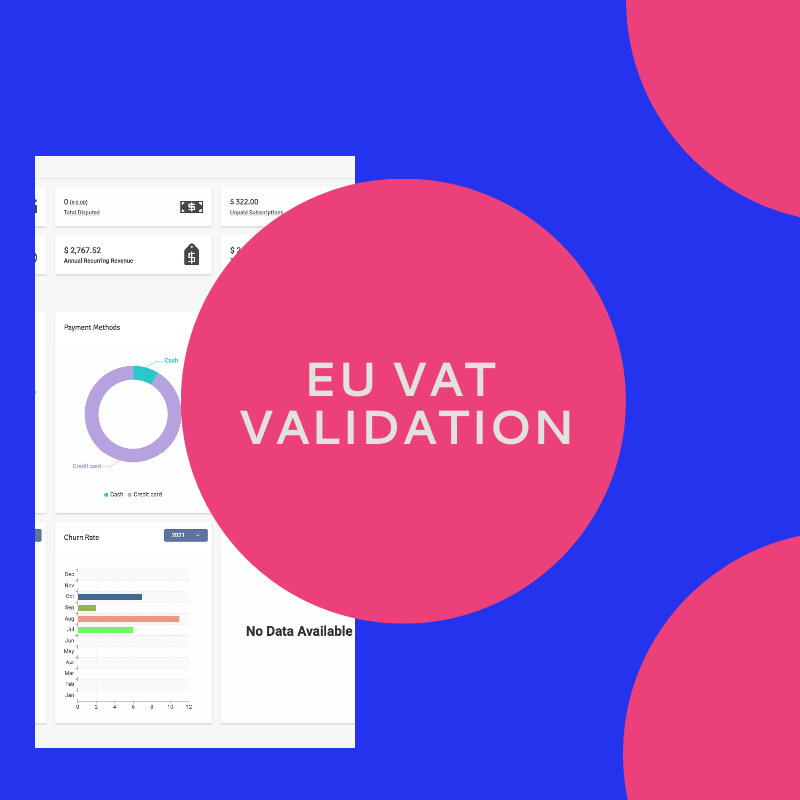EU VAT Validation

VAT Validation
This Blog is for businesses that sell to customers in the EU and covers the basics of VAT and VAT OSS. You’ll learn when and how to register to collect Value Added Tax, how to calculate and collect VAT, and how to file your VAT returns. You’ll also learn how Stripe Tax can help you comply.
Value Added Tax Calculation
To calculate VAT on a transaction, you need to determine three things: the customer’s status (business or individual), which country’s VAT to collect, and the correct Value Added Tax rate.
Identifying whether your customers are businesses (B2B) or private individuals (B2C)
Before you calculate VAT, you need to determine if your customer is a business or a private individual. This is an important step as it will determine whether you have to charge any VAT at all.
With MYFUNDBOX VAT Validation Feature your customer can provide a valid Value Added Tax ID number which will be Validated with the VAT Information Exchange System (VIES) portal. this verification is required to help prevent tax fraud.
If you’re a European business selling to a business in a different EU country, you often don’t have to charge VAT. For these B2B sales, either the reverse charge method applies (in which case the buyer pays the Value Added Tax directly to their government rather than through you) or you may benefit from the application of a zero VAT rate (in which case you don’t have to pay any Value Added Tax).
Buyer Evidence
Given that the tax rates vary significantly based on the buyer’s location, the government wants a record that confirms where the customer was when they purchased digital goods. You generally need to keep two pieces of evidence that confirm your customer’s address for every sale of digital products.
This extra layer of documentation limits the possibility that businesses or individuals could commit tax fraud by either charging or paying the wrong tax rate. With MYFUNDBOX Checkout Configuration Options you can collect and store a customer’s residence and that the correct tax rate was charged and paid.
When selling to business customers, you also have to issue a Value Added Tax invoice even if you don’t charge Value Added Tax. Selling businesses need to retain these records—which include their business information, the selling price and applied Value Added Tax rate, the buyer’s name and address, and the Value Added Tax ID number, among other information—for the time period specified by their local legislation with MYFUNDBOX Invoice you collect this information.
MYFUNDBOX Value Added Tax validation reduces the complexity of tax compliance so you can focus on growing your business.

